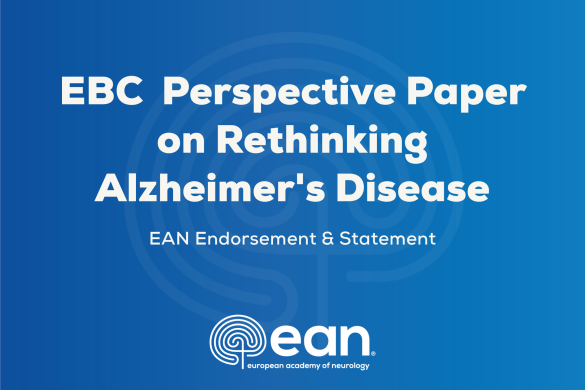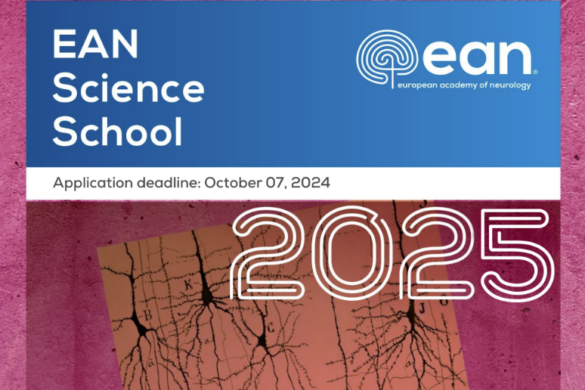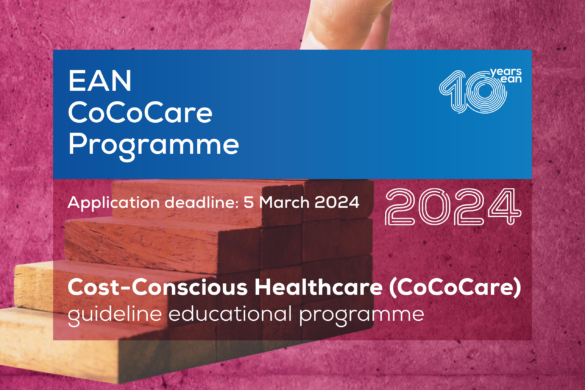Dear Readers,
We invite you to read the following article recommendations, prepared for you by our Scientific Panels: Dementia and cognitive disorders, Higher cortical functions, Infectious diseases, Movement disorders, Palliative care.
- Winblad B, Amouyel P, Andrieu S, et al. Defeating Alzheimer’s disease and other dementias: a priority for European science and society. The Lancet Neurology; 15 (5): 455-532.
This manuscript addresses a range of challenges, which need to be considered to reduce the burden of dementia, including health economics, epidemiology, prevention, genetics, biology, diagnosis, treatment, care, and ethical issues. With the premise that the management of dementia is a priority for Europe, and in light of data obtained in the last few decades, Authors give recommendations about how patient care and related research, from basic to clinical, in Alzheimer’s disease and other dementias should be organized in the future.
Daniela Galimberti, PhD
University of Milan
Fondazione Cà Granda
IRCCS Ospedale Maggiore Policlinico
Milan, Italy
EAN Scientific Panel Dementia and cognitive disorders
***
- Achterberg M, Peper JS, van Duijvenvoorde ACK, et al. Frontostriatal White Matter Integrity Predicts Development of Delay of Gratification: A Longitudinal Study. The Journal of Neuroscience 2016; 36(6): 1954-1961.
Delayed gratification, i.e. the ability to ability to resist to temptations waiting for a later, larger gratification, is a manifestation of impulse control, which in a classic study of preschoolers was shown to predict self-control abilities 40 years later (Casey et al., 2011). Effective gratification delay has been associated to many positive traits, such as academic success and social skills. It is well known that this ability increases during the time course of normal development, with a crucial step at the time of adolescence. The developmental trajectory of delayed gratification has been linked to the progressive post-natal maturation of fronto-striatal connections. This large scale longitudinal study based on fiber-tracking with diffusion tensor imaging scanning validated this hypothesis on subjects between 8 and 26 years of age, who performed a delay-discounting task twice with a 2 years’ interval. The design allowed to track the complex time course of maturation of fronto-striatal white matter, supporting the role of quantitative imaging parameters as excellent predictors of current and future abilities to delay gratification. These results may have important implications for the pathophysiology of developmental and acquired impulse control disorders.
- Casey, BJ, Somerville LH, Gotlib IH, et al. Behavioral and neural correlates of delay of gratification 40 years later. Proceedings of the National Academy of Sciences 2011; 108 (36): 14998–5003.
Stefano F. Cappa, MD, Prof
2nd Department of Neurology
Ospedale San Raffaele – Vita-Salute San Raffaele University
Italy
Co-chair, EAN Scientific Panel Higher cortical functions
***
- Van Haren K, Ayscue P, Waubant E, et al. Acute Flaccid Myelitis of Unknown Etiology in California, 2012-2015. JAMA 2015; 314(24): 2663-71.
In 2012, the California Department of Public Health received notice of several cases of acute flaccid paralysis (AFP). The ancillary investigation did not implicate poliovirus or other infectious pathogens and measures for enhanced surveillance were initiated.
In this report, Van Haren and co-workers report 59 subsequent cases of AFP with undetermined etiology between June 2012 and July 2015. Most patients were children and young adults. Fifty-six patients had T2 hyperintensity of spinal gray matter on magnetic resonance imaging and 43 patients had cerebrospinal fluid pleocytosis. Among 45 patients with follow-up data, 38 had prolonged weakness at a median follow-up of 9 months (IQR, 3-12 months). Two patients, both immunocompromised adults, died within 60 days of symptom onset. Thus, clinical course and additional examinations point at a polio-like paralytic syndrome caused by acute flaccid myelitis of unknown origin.
Johann Sellner MD
Department of Neurology
Christian Doppler Medical Center
Paracelsus Medical University
Salzburg, Austria
EAN Scientific Panel Infectious diseases
***
- Picillo M, Lozano AM, Kou N, Puppi Munhoz R, Fasano A. Programming Deep Brain Stimulation for Parkinson’s Disease: The Toronto Western Hospital Algorithms. Brain Stimulation 2016; 16. [Epub ahead of print]
- Picillo M, Lozano AM, Kou N, Puppi Munhoz R, Fasano A. Programming Deep Brain Stimulation for Tremor and Dystonia: The Toronto Western Hospital Algorithms. Brain Stimulation 2016; 16. [Epub ahead of print]
Although deep brain stimulation (DBS) is an established and effective treatment for Parkinson’s disease, essential tremor and dystonia, programming sessions mainly rely only on neurologist’s experience. Management of DBS patients based on standardized approach to stimulation programming is greatly required, as insufficient effect of stimulation therapy might be due to poor programming. The two studies by Picillo et al provide algorithms for systematic programming for these diseases, based on literature review and current practice at Toronto Western Hospital. For Parkinson’s disease management, the authors propose four algorithms addressing the initial programming stage, and management of symptoms following DBS (speech disturbances, stimulation-induced dyskinesia, and gait impairment). For management of essential tremor, the three algorithms include initial programming, management of balance and speech issues and loss of stimulation benefit. Finally, for the management of dystonia, the two algorithms refer to initial programming and management of stimulation-induced hypokinesia (shuffling gait, micrographia and speech impairment). The application of these algorithms is expected to supplement current standards of care in established as well as new DBS centres.
- Odekerken VJ, Boel JA, Schmand BA, et al; NSTAPS Group. GPi vs STN deep brain stimulation for Parkinson disease: Three-year follow-up. Neurology 2016; 86(8):7 55-61.
In this randomized trial the authors aimed to compare motor symptoms, cognition, mood, and behaviour 3 years after bilateral deep brain stimulation (DBS) of the subthalamic nucleus (STN) or globus pallidus interna (GPi) in Parkinson disease patients (1:1). The primary outcome measures were (1) improvement in motor symptoms in off-drug phase measured with the Unified Parkinson Disease Rating Scale (UPDRS) and (2) the number of patients with a negative composite score for cognitive, mood, and behavioural effects, and inability to complete the follow-up period. Secondary outcome measures were also probed. The following scales were recorded at baseline and follow-up in off- and on-drug phases: UPDRS-ME sumscore of items 27–30 (arising from chair, posture, gait, postural stability), Clinical Dyskinesia Rating Scale (CDRS), Academic Medical Center Linear Disability Score (ALDS), UPDRS activities of daily living section (ADL), and the Schwab & England score (S&E). In addition, the Parkinson’s Disease Sleep Scale (PDSS) and the Parkinson’s Disease Quality of Life Questionnaire (PDQL) were recorded in the on-drug phase. Medication, DBS settings, self-report off/on-drug diaries, and adverse events were also recorded.
One hundred and twenty-eight patients were enrolled initially, and 90 of these completed the 3-year follow up assessments. The authors found that the STN patients improved significantly more than the GPi group with regard to motor symptoms, but there were no between-group differences on the composite score. The results were identical in intention-to-treat and per-protocol analyses. No between-group differences at 3 years were detected on the UPDRS-ME sum score, CDRS, UPDRS-ADL, or S&E in the off-drug phase. There was a trend for higher improvement in functioning on the ALDS in the STN group. In the on-drug phase, no between-group differences were detected on the UPDRS-ME, PDSS, ALDS, UPDRS-ADL, S&E, or PDQL. The CDRS while on-drug improved more in the GPi group. Unsurprisingly, larger medication reductions were seen in the STN group. Adverse events were similar in both groups, but there were more reoperations in the GPi group (n=8 vs. STN n=1). This randomized study suggests that STN DBS provides more off-phase motor improvement than GPi DBS at 3 years after surgery, but with a similar risk for cognitive, mood, and behavioural complications.
Francesca Morgante, MD, PhD
Department of Clinical and Experimental Medicine, Movement Disorder Unit
University of Messina
Italy
&
João Massano
Department of Neurology, Hospital Pedro Hispano/ULS Matosinhos
Department of Clinical Neurosciences and Mental Health
Faculty of Medicine University of Porto
Portugal
EAN Scientific Panel Movement disorders
***
There are often issues as to when palliative care should be involved in the care of people with neurological disease. Sometimes there may be consideration only at the very end of life, but patients may the miss out on the support and care that they may need earlier on in the disease progression. A recent paper addresses some of these issues.
- Creutzfelt CJ, Robinson MT, Holloway RG. Neurologists as primary palliative care providers – communication and practice approaches. Neurology: Clinical Practice 2016; 6 (1): 40-48.
A paper from the US looks at the role of palliative care using two case studies. The authors consider a patient with ALS and a patient who has an ischemic infarct and has a right hemiplegia.
The areas they look at are:
- Discussing serious news – stressing the need for open communication and the difference in the two scenarios with open discussion of the diagnosis and prognosis with the person with ALS, whereas it may be coping with the fears and concerns of the family as to whether the stroke patient will survive or be disabled
- Symptom management – looking at the need for careful assessment of all the person’s needs, physical, psychological, social and spiritual
- Aligning treatment with patient preferences – helping patients and families establish goals for the future and start advance care planning
- Introducing hospice for terminal care – they argue that in the US hospice care is often restricted to 6 months, and as such underutilised and patients miss optimal end of life care. Palliative care should be considered earlier in the disease progression.
- The multiprofessional approach – there may be many professionals of different professions and disciplines, involved and there is a need for close collaboration between all services to provide co-ordinated care
This paper provides a challenge for all involved in the care of people with neurological disease and allows further discussion on the ideas that neurologists need to develop their palliative care skills, more palliative care specialists need training in the problems of neurological patients and the need for collaboration for the benefit of patients, families and professionals.
Professor David Oliver
Consultant in Palliative Medicine
Wisdom Hospice
Rochester, UK and
Honorary professor
University of Kent
Co-chair, EAN Scientific Panel Palliative care











